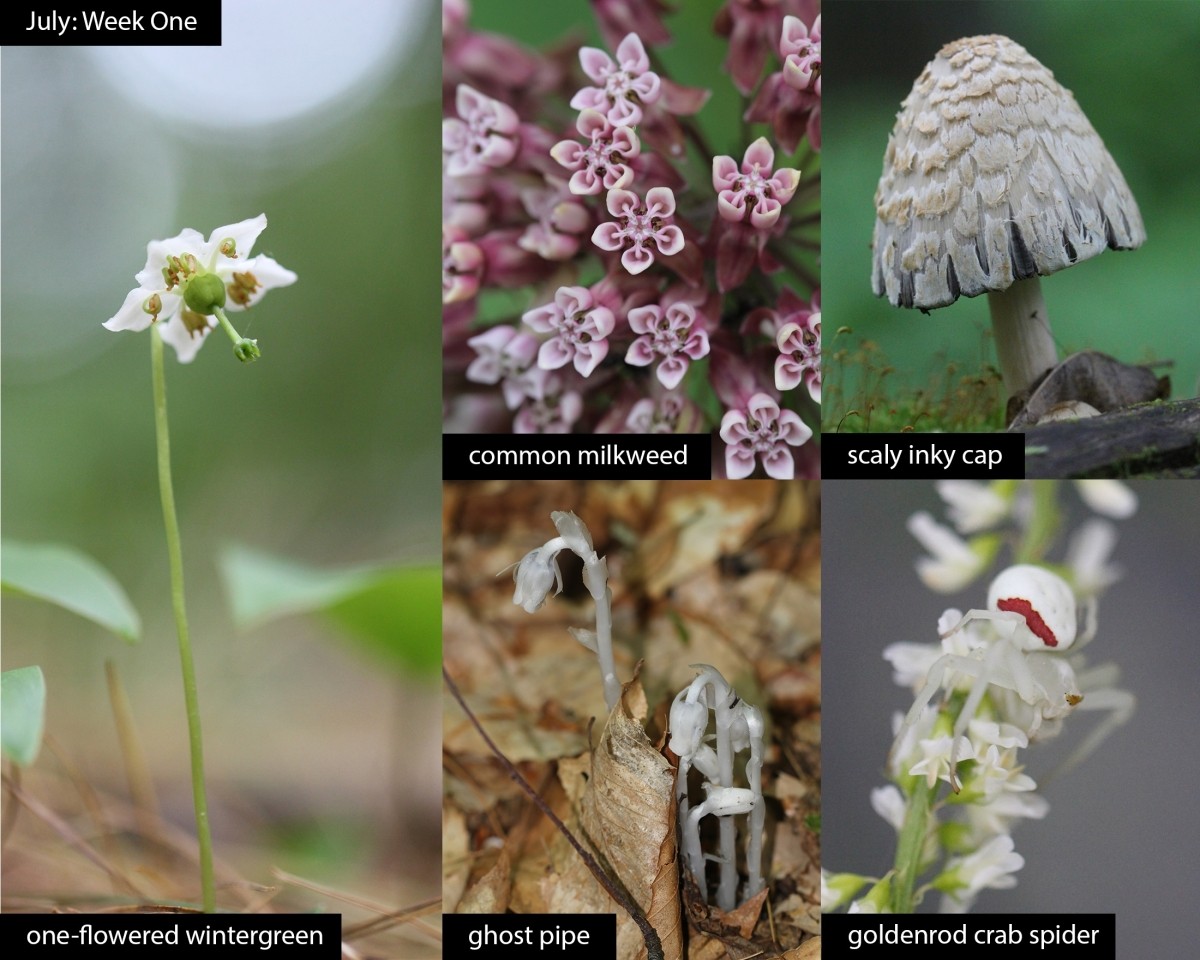This week in the woods, one-flowered wintergreen popped up everywhere in a shaded Topsham, Vermont, pine stand but didn’t want to grant us the privilege of seeing its face unless we got down on our knees and bellies. Also called the “shy maiden” among many other common names (wax flower, single delight, star of Bethlehem, frog’s reading lamp, and wood nymph), Moneses uniflora has a single, terminal, waxy, nodding flower per stem and is the only species in its genus.
We have several milkweed species in our area, and around now common milkweed blooms. Milkweeds have earned fame as the host plants for monarch butterflies and being their caterpillars’ exclusive food, but they remain vital for many other insects, some of which also bear the plant’s name. Milkweed leaf feeders – such as the milkweed tussock moth caterpillar, small milkweed bug, swamp milkweed leaf beetle, and red milkweed beetle – tend to absorb toxins from the plant’s sticky white latex sap and develop bright colors that warn off predators. Its flowers attract bees, wasps, butterflies, and moths as well and have sweeter, more plentiful nectar than many other wildflowers do. Barbara Mackay’s 2015 Outside Story article gives an overview of the insect life you might observe the next time you visit a milkweed patch. You might find a monarch chrysalis, and as Kent McFarland notes in an archival post from Vermont Center for Ecostudies that Elise Tillinghast directed us to, you might also find disembodied insect legs or entire dead insects, accidentally trapped by slits in the flowers that contain pollen packets.
This scaly inky cap grew in a group on a decaying fallen log in Topsham, Vermont. As it grows, the mushroom will expand and turn bell shaped, and then flatten and flare; like other ink caps, its gills will liquify and turn into an inky black fluid, releasing its spores in a process called deliquescence.
Found near the inky caps, this ghost pipe is not a fungus, however much its waxiness and whiteness may suggest that it is. These plants do not photosynthesize and instead draw nutrients from mycorrhizal fungi, which themselves draw nutrients from tree roots. As Michael J. Caduto describes in this archival Outside Story article, these downward-facing flowers (shy like the shy maiden above) will turn upward once pollinated.
This goldenrod crab spider sat on some invasive sweet whiteclover on a West Fairlee, Vermont, roadside, waiting to ambush pollinating insects. As Lee Toomey describes in a recent Outside Story article, these arachnids are crablike in the skyward position of their front limbs and their tendency to walk sideways, but they also have much in common with the chameleon and can turn from white to yellow and back in order to match their perch plant’s color.
What have you noticed in the woods this week? Submit a recent photo for possible inclusion in our monthly online Reader Photo Gallery.


